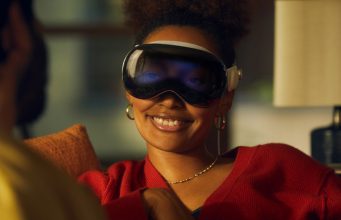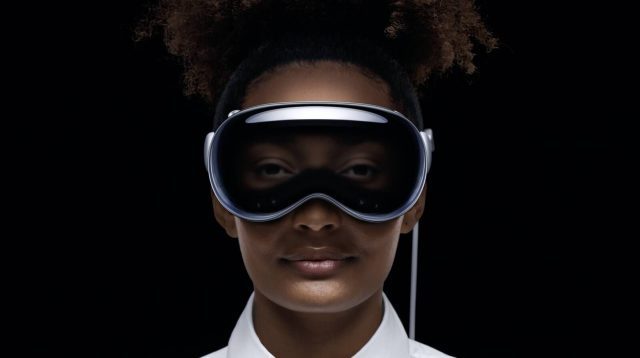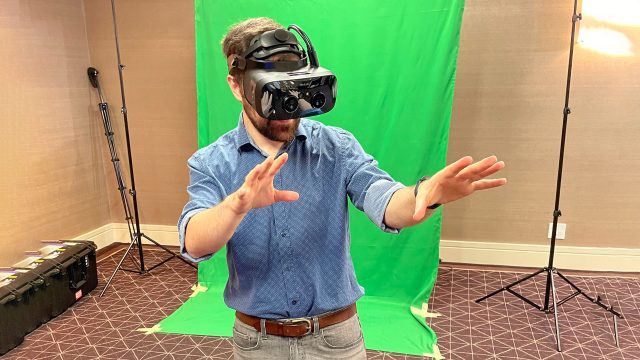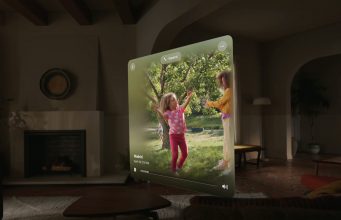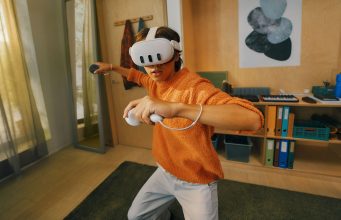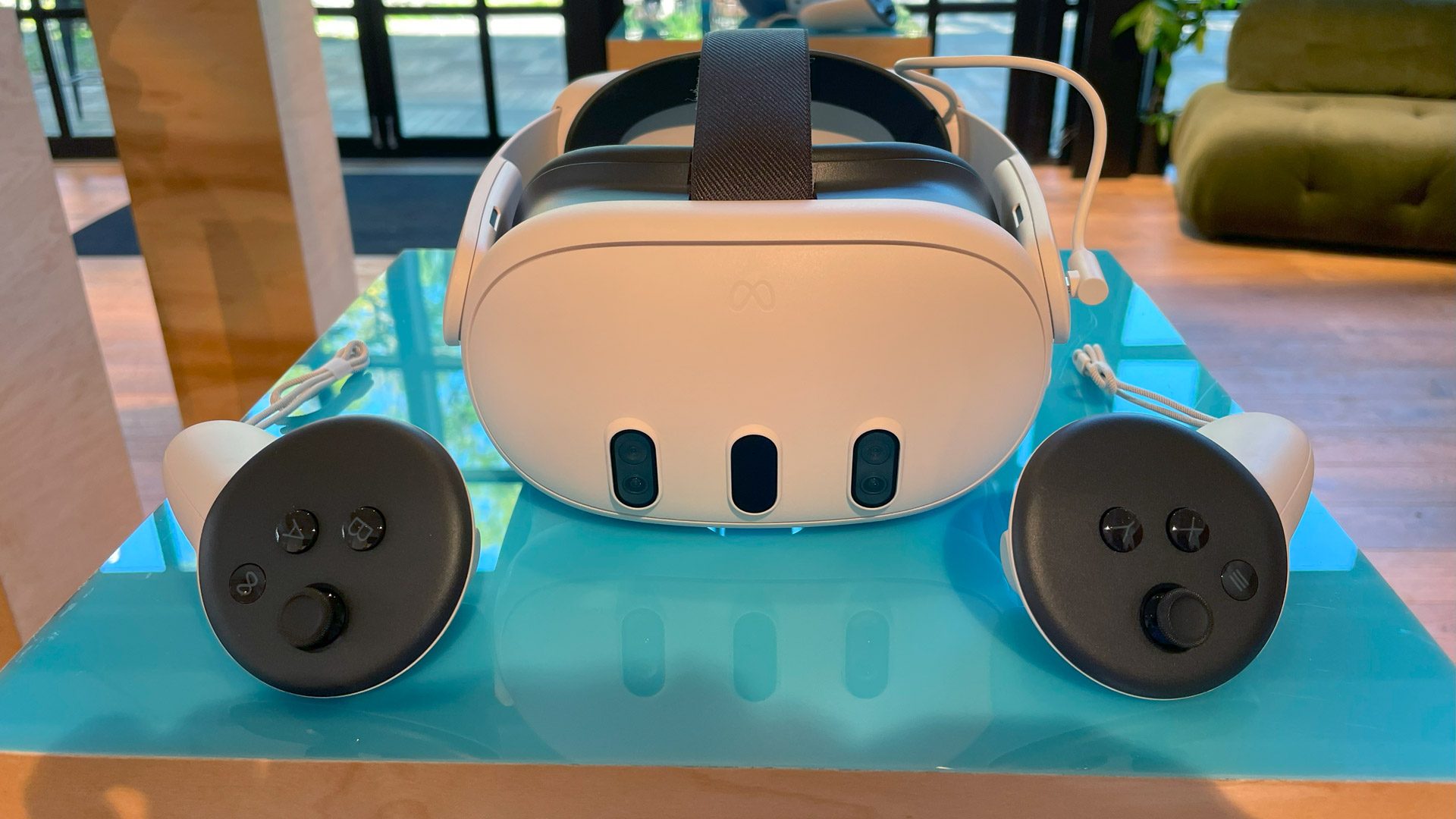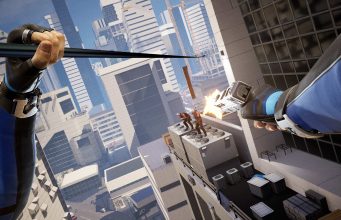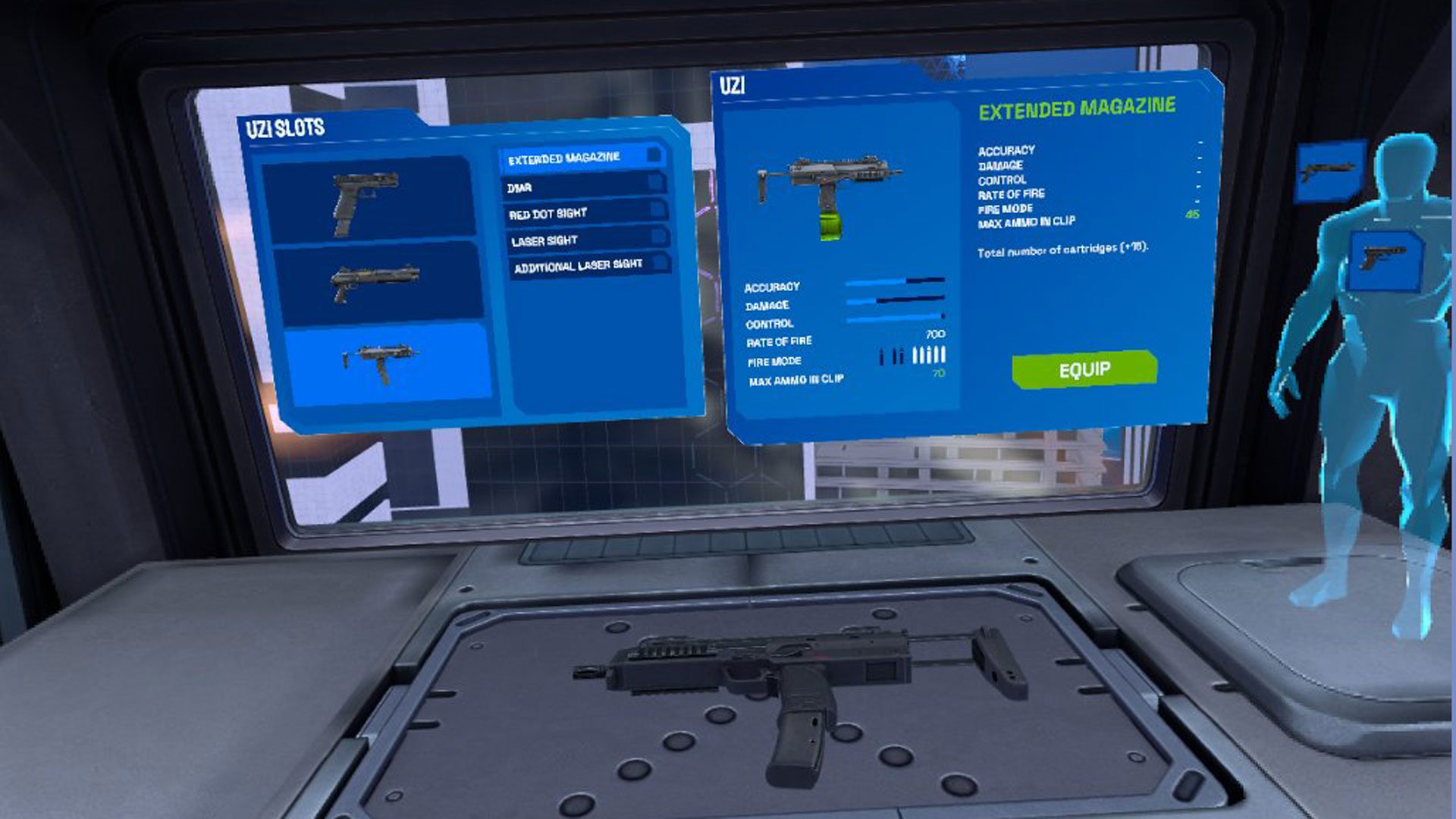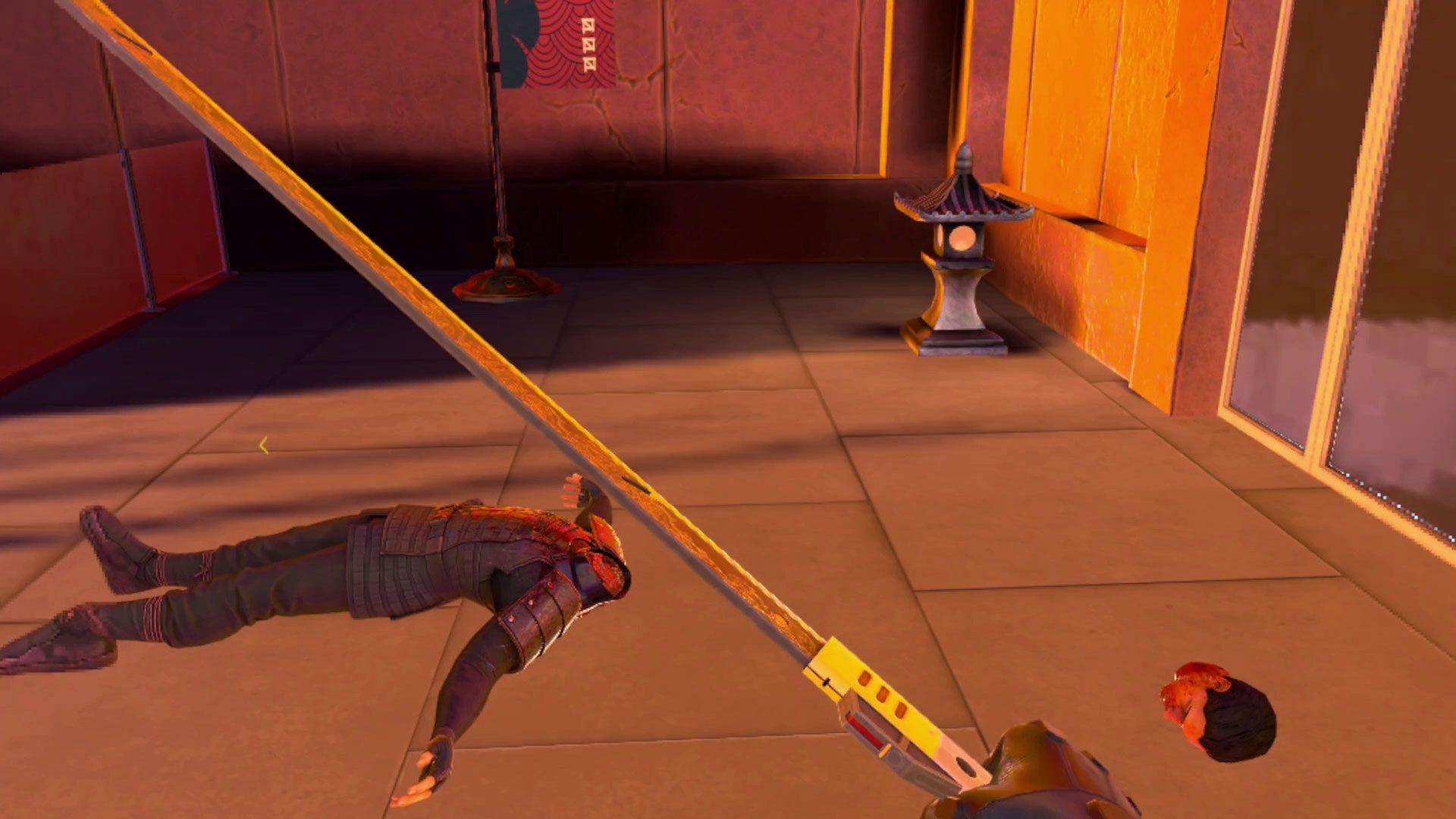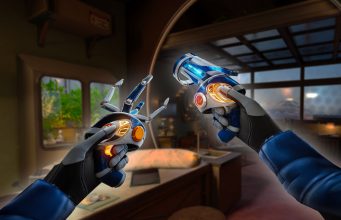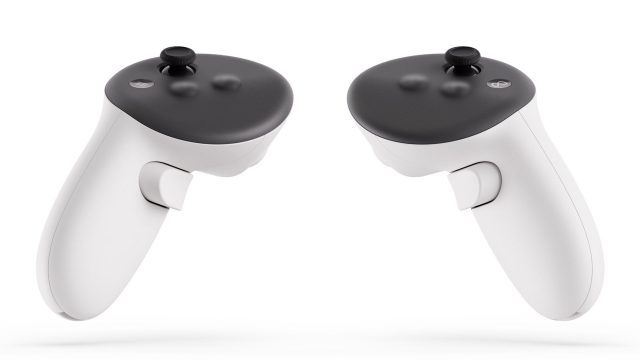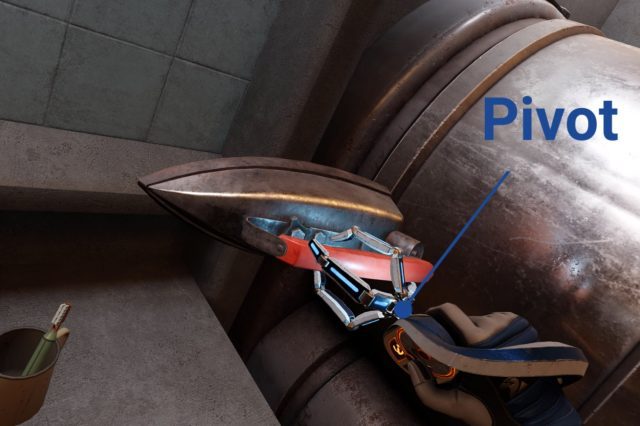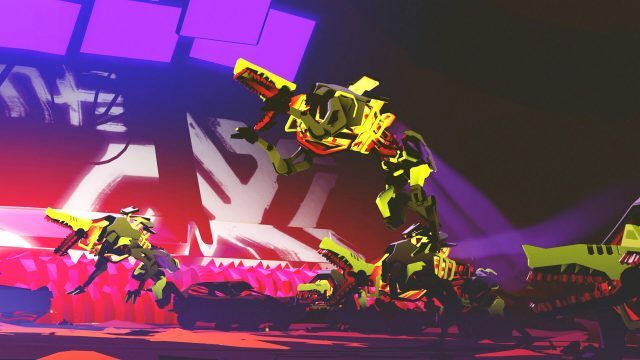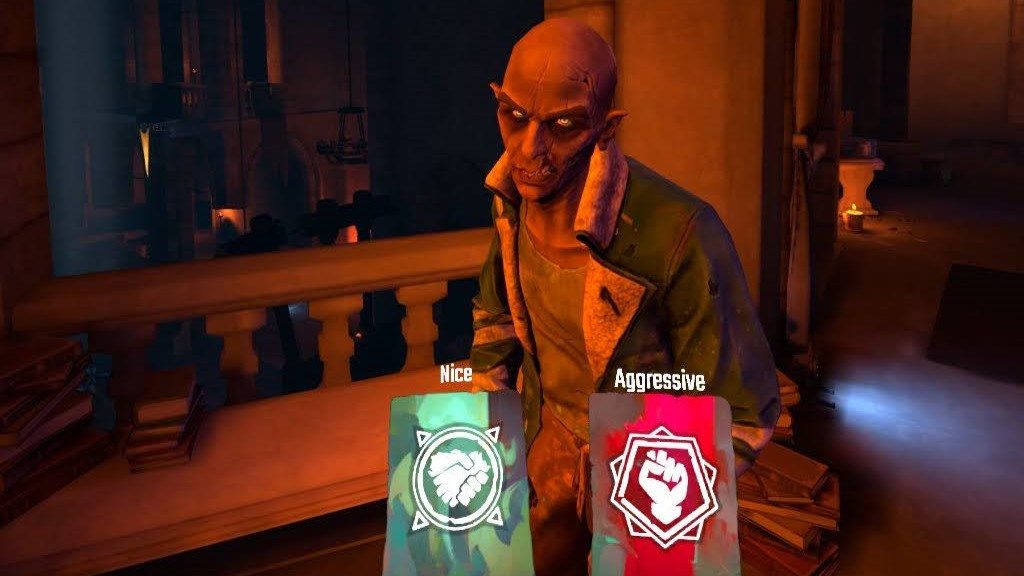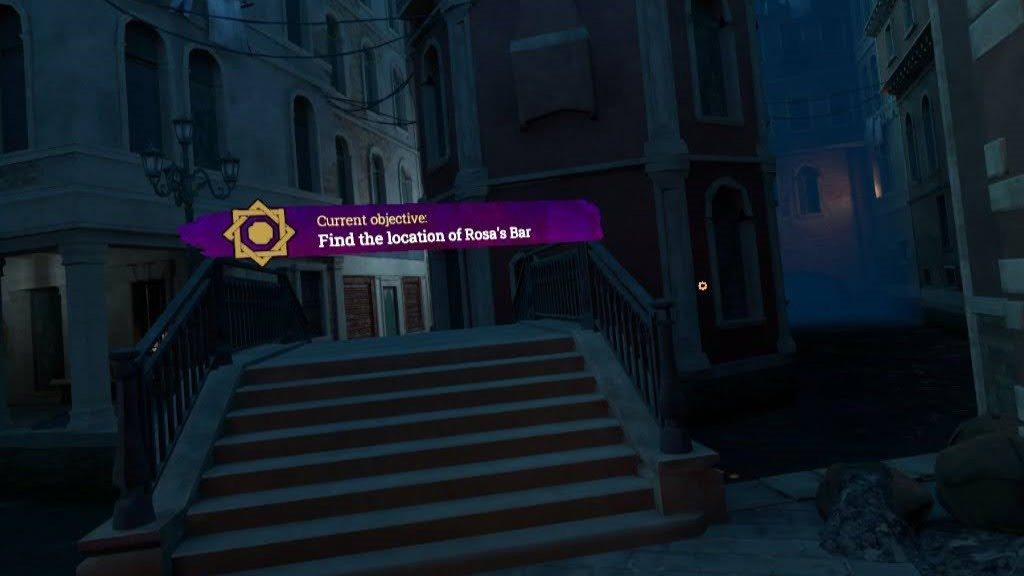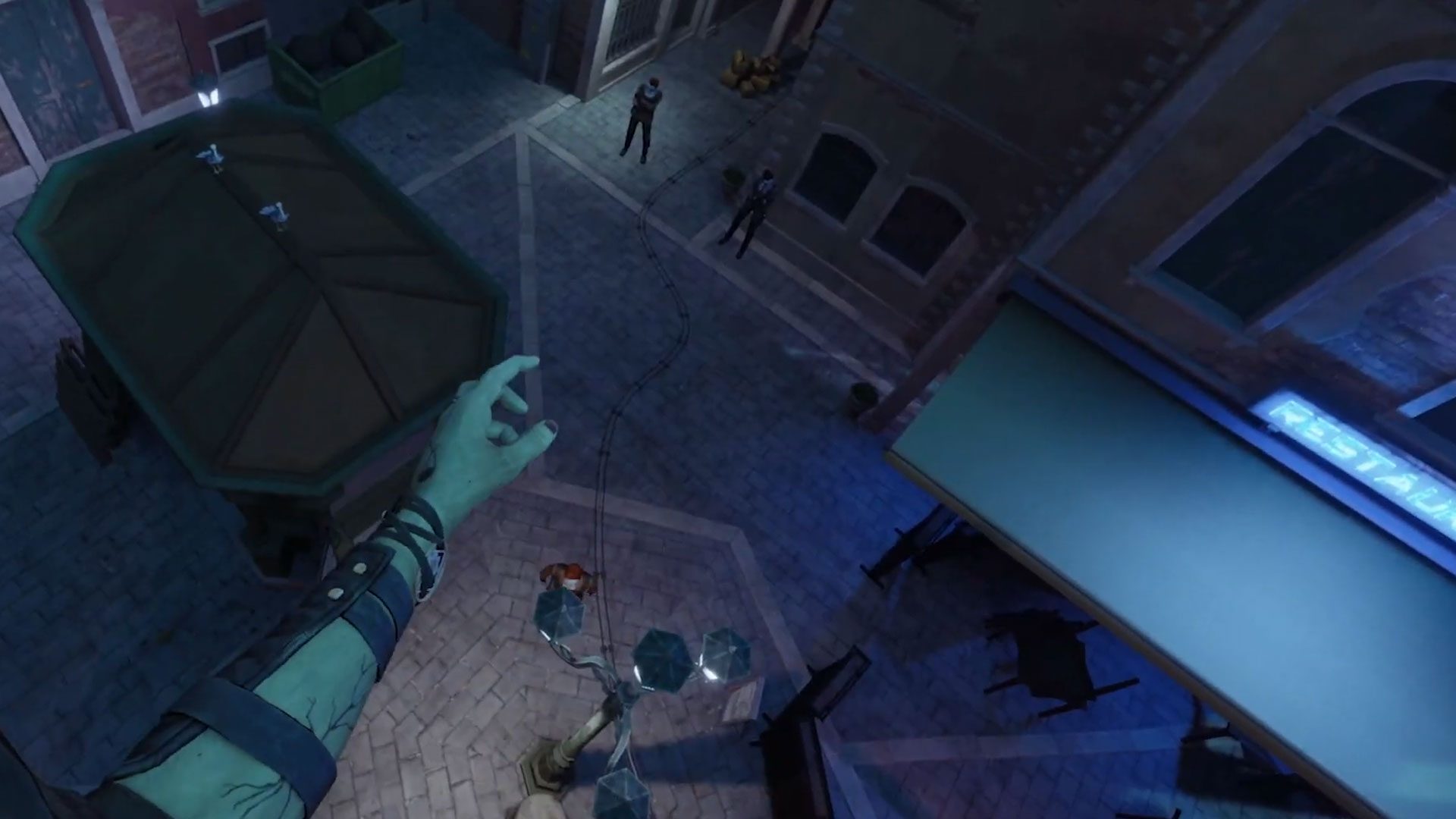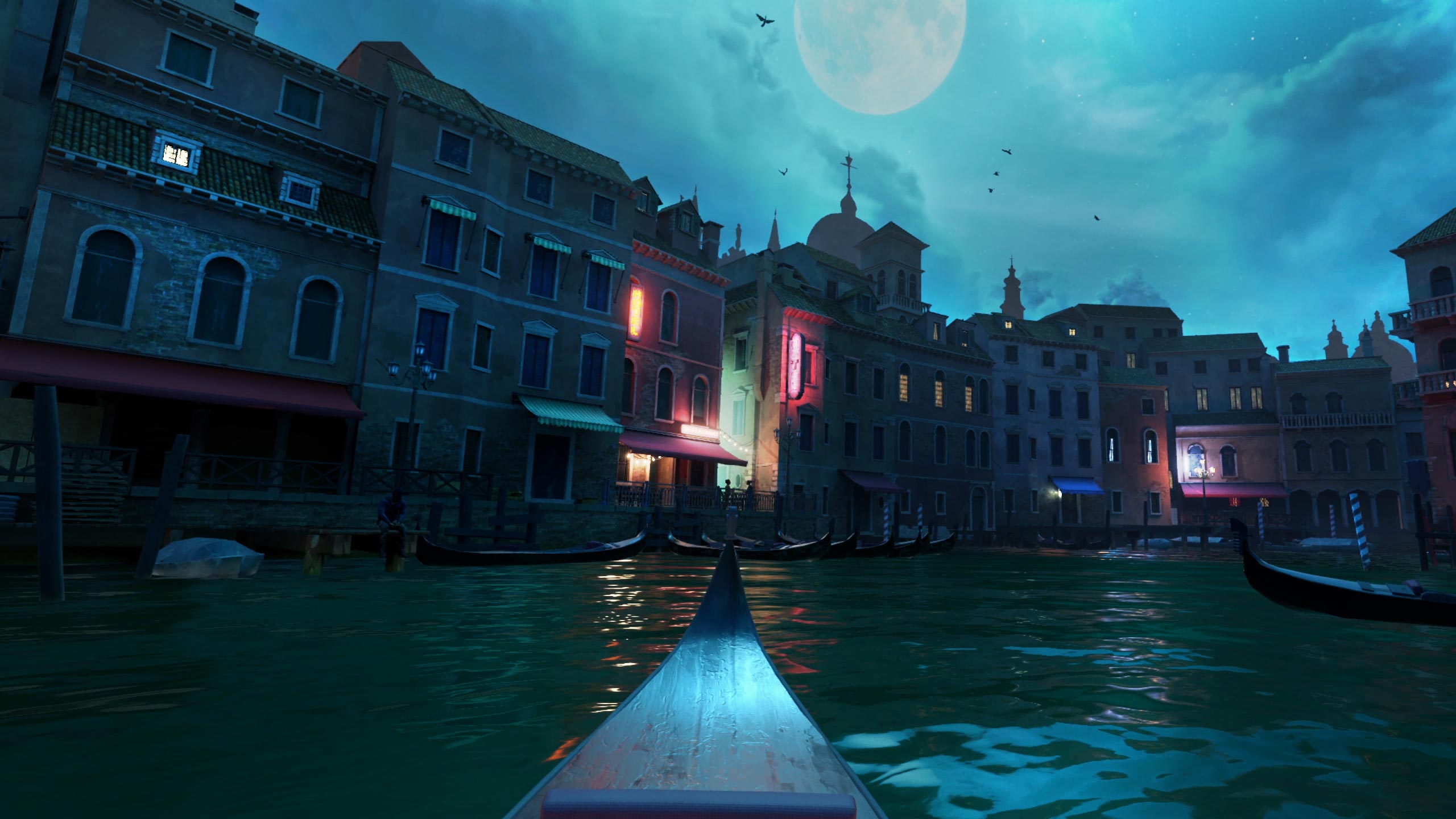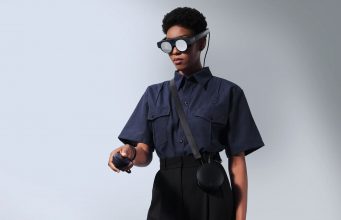‘Assassin’s Creed Nexus VR’ Review – AAA Without the Polish
Easily the most recognized IP to launch in a VR game this year, Assassin’s Creed Nexus VR is quite anticipated and has a lot riding on it. But as we know, translating existing flatscreen games into VR is never an easy process. Did Ubisoft nail it? Read on to find out.
Assassin’s Creed Nexus VR Details:
Available On: Quest 2, Quest 3, Quest Pro
Reviewed On: Quest 3
Release Date: November 16th, 2023
Price: $40
Developer: Ubisoft
Gameplay
Assassin’s Creed Nexus VR manages to stay true to the core tenants of an Assassin’s Creed game. If you’ve played the franchise before you’ll feel at home with the game’s mix of parkour, stealth, and combat.
The systems feel largely similar too; enemies will keep an eye out for you and their alertness levels will change if hear something or previously saw you; and the flow of parkour feels just like you’d expect in terms of what the game considers a valid jump or handhold. Combat is the outlier though (more on that later).
The game’s underlying story structure is also similar—you’re a dude in the future who is using a VR system called the Animus to jump into a simulated version of the past. The game lens into the concept of VR in a neat way by showing that the main characters are meeting in VR itself, alongside a very cool touch of using the headset’s passthrough cameras to sometimes use a backdrop of your own home before you’re fully connected to the system (though I wish they would have reinforced this more narratively).
However, the game has you jumping between three different characters, story lines, and locations (four if you count the Animus meta-story), which predicably leads to a scattered story and no attachment to any of the characters. This only reinforces the game’s habit of basically just saying ‘go here and do this’, leaving you with little internal motivation or sometimes even an idea of what you’re doing and why.
As is par for the course with Assassin’s Creed games over the years, you will be constantly—and I mean constantly—guided around by objective markers. “Go here, do that” is what the game is constantly telling you, often with 2D pop-ups floating in front of your face telling you about your next objective or which one was just completed (sometimes even overlapping each other).
It’s makes for a very ‘flatscreen’ feel that can start to be distracting and annoying, especially early on when the game is also constantly popping up tutorial tips attached to your controllers, accompanied by a heavy haptic buzz to get your attention.
And also well known about the franchise, the only thing to do other than the main objectives is to find randomly scattered collectibles. Most are collectibles just to be found, but there’s also some points which are parkour challenges, shooting challenges, or historical markers. None of which I found fun enough to bother with after a handful of times.
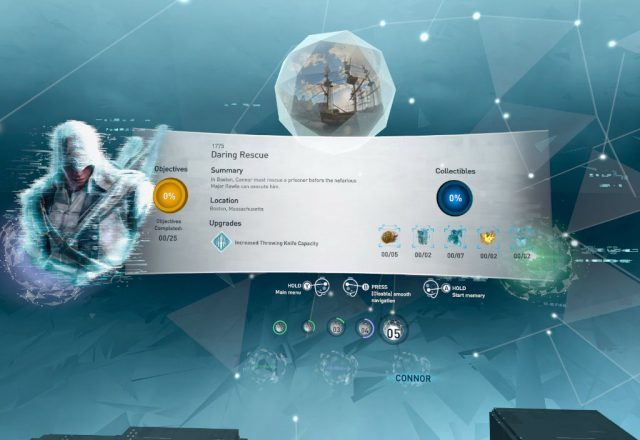 Even an hour and a half into the game I still felt like I was in heavy tutorial mode. The game has a lot of systems to teach you (even after the explicit tutorial stages); I guess it’s gotta do that somehow, but it wasn’t until about two hours in that I felt like was really starting to have some fun. Things also got better as the game started to open up to larger spaces that acted as a better playground for your capabilities.
Even an hour and a half into the game I still felt like I was in heavy tutorial mode. The game has a lot of systems to teach you (even after the explicit tutorial stages); I guess it’s gotta do that somehow, but it wasn’t until about two hours in that I felt like was really starting to have some fun. Things also got better as the game started to open up to larger spaces that acted as a better playground for your capabilities.
Parkour
Parkour generally works. And given that it seems largely adapted from the franchise’s existing third-person parkour system, I’m surprised it works as well as it does. While running, holding the A button initiates parkour, causing you to relatively fluidly jump from one obstacle to the next.
The variety of places where the game will you to jump to feels really good and it’s pretty great at inferring where you want to jump (it considers where you’re looking to do so). You get a reliable sense for what constitutes valid terrain which gives you that feeling that the rooftops are your playground.
The only place where this system stumbles is mantling. If your next jump is high enough that you can’t land on your feet, then you’ll need to grab the next hold with your hands and pull yourself up. When this works it’s a great way to get the player physically involved in the parkour without making them do too much.
But the game’s hand-holds (while plentifully and mostly predictable) feel finnicky and only work maybe 80% of the time that you expect them to when mantling.
That means that when you’re running from guards in a high speed chase, 20% of the time your next hand-mantle will fail leaving you to slide down with your face through a wall. As you can imagine, that really kills the momentum and immersion.
Stealth
It took a little while to click, but once I got a feel for the enemy behavior, stealth did start to feel pretty fun. Sneaking and trying to avert their gaze makes for a fun cat and mouse game, especially when you identify opportunities to sneak up behind a guard that no one else can see and use your hidden blade to quickly dispatch them—that’s one less pair of eyes you need to worry about.
You can drag dispatched bodies to hide them, which is fun in theory, but doing so makes you move so frustratingly slow that it often feels like a greater risk than the potential reward. You can also only grab bodies at specified points which felt cumbersome.
The game does a good job of giving you multiple ways to approach your target, whether that’s sneaking around on the ground, or sticking to the rooftops.
At any time you can use the Animus Scout view to look at the whole area from a birds-eye view, allowing you to tag guards, watch their patrol paths, and spot good routes for infiltration. I really liked the little detail that when you exit the Animus Scout view you remain looking in the same direction. That makes it seamless to decide on a route you want pursue from above, then translate that to what you’re doing on the ground.
Difficulty
The game not only includes different levels of difficulty, but thoughtfully lets you tune stealth and combat difficulty individually. The default stealth difficulty felt like a good combination of fair and fun. Unfortunately even at the highest combat difficulty, combat is a weak point of the game.
Combat
Of the three core gameplay systems—parkour, stealth, and combat—the latter feels the worst to me. It’s missing the kind of game-feel that you’d want from a AAA production (let alone much smaller studios that have delivered better VR combat). It’s not challenging and extremely easy to exploit (even on the hardest difficulty). You can basically just keep swinging and enemies will steadily die in front of you.
Functionally the game tries to approximate something like Until You Fall, which is a great choice as a model; Assassin’s Creed Nexus VR allows for blocking and parrying (largely gestural) which is fun, but it just doesn’t deliver the polish that makes Until You Fall work so well, nor does it achieve the visceral physics-based action that we see from something like Blade and Sorcery.
Ultimately combat has very little flow, especially when fighting multiple enemies.
And because combat isn’t particularly fun, being spotted and swarmed with guards often amounts to a feeling of annoyance (that you’ll now have to dispatch them all by brute force) instead of looking forward to the fight.
Assassin’s Creed Nexus VR uses a recharging health system which really undercuts what otherwise could have been great tension between stealth and combat. Because your health regenerates, you can simply limp away from a fight, wait until you’ve become hidden again, then just continue on your way and fight again when the time arises.
Had the game instead employed discrete hit points (ie: you can only get hit three times without healing before you die), then getting spotted and forced into combat could mean losing a crucial hit point or two. Then, if you get away and become hidden. The desire to truly remain stealthy is very high because with only one hit point there is a genuine desire not to fight—not because the combat isn’t that fun—but because there’s a real risk of death.
As far as I can see, this small tweak to the game’s health system would make it significantly more tense and fun as a stealth game. I know it’s unlikely, but I’d love to see it introduced in an update, perhaps as an alternate difficulty setting.
In the same way that Ubisoft wasn’t able to escape the flatscreen feeling of objective markers and pop-ups, the game’s menus are sluggish and use a weird combination of laser pointer and button presses, making them rather strange to navigate. Many common actions require you to hold down the A button for what feels like a good three seconds, even in cases where the outcome isn’t something that needs a ‘super confirmation’, like simply swapping from one objective to another.
And then there’s the game’s boot sequence. It takes a good one minute and thirty seconds to go from game launch to loading into your last level on Quest 3, and probably 75% of that time is because of painfully slow disclaimer pop-ups, logo pop-up, and of course the dreaded ‘Connect your Ubisoft account’ pop-up that comes up every single time the game freshly opens. This isn’t an issue if you set the headset down and put it to sleep without leaving the game, but if you do anything with your headset between sessions of the game, you’ll be greeted with that same sequence every time.
Yes, one minute and thirty seconds doesn’t sound like a long time, but when you’re stuck in your headset just watching slow logo animations, re-reading the same disclaimer, and re-dismissing the Ubisoft account thing you already told the game you don’t want, it’s really quite annoying—especially because this is all artificial waiting time that doesn’t need to be there.
Front a content standpoint, the game takes roughly 15 hours to finish the main story, or longer for those that want to find all the collectibles in each level. At any time you can jump back to previous levels to play them again and find more collectibles.
Immersion
Assassin’s Creed Nexus VR certainly feels like it’s based on systems that were built for the the third-person Assassin’s Creed games, which don’t feel like they were made for first-person scrutiny. Specifically NPCs are consistently janky with a look that’s deep in the uncanny valley, consistently terrible lip-sync, and often creepy or glitchy expressions.
You’ll also see two of the exact same NPC talking to each other, as a third copy of the same NPC walks down the street nearby.
For the size of the game and the number of NPCs and objects that are present at any given time, I’d say the game looks pretty impressive visually, even if it’s not the ‘best graphics’ we’ve seen from a standalone VR game.
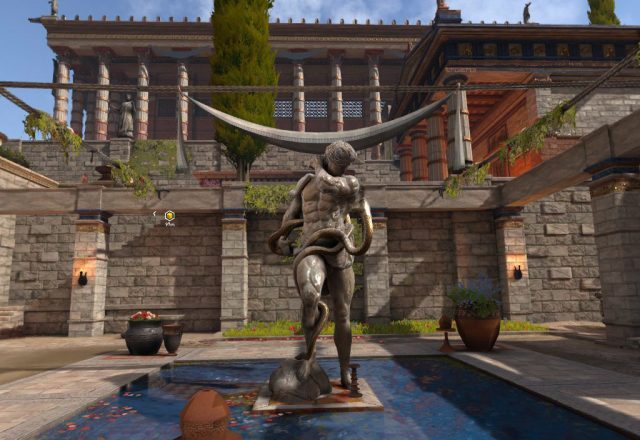
In VR it’s rare to see such a large space that you can actually traverse in front of you, and that gives the game a unique feeling. This scale is emphasized by the Animus Scout view which lets you see the entire space at once from a birds-eye view, including NPCs strolling around even several streets away from you.
The game generally has the interaction systems that you want, but it’s just lacking VR-specific polish.
Assassin’s Creed Nexus VR does the old ‘magically invisible inventory’ thing where to ‘pick something up’ (like arrows or a smoke bomb) you grab the item then release, which just magically teleports it to your inventory.
The same thing happens with objective items, keys, etc. And when you need those objective items, they just appear on demand when you grip your hand. For instance, if you need to hand an objective item to another character who is holding out their hand, you reach your hand near their hand, then grab the air—and the object appears in your hand for you to give it to them.
I just don’t love this ‘point and click’-like interaction in VR; even asking the player to just stash items over their shoulder feels way more immersive and hands-on.
Speaking of immersive interactions: the hidden blade feels generally good. You pull it out by holding your trigger and flicking your wrist, which is very reliable and definitely gives you a sense of being a badass with this unique weapon. But the gratification of air assassinations (jumping down to stab from above) is really undercut by the fact that your arm janks out almost every time and looks like a broken twisted mess. This is indicative of the missing polish in many of the game’s interactions that are essential to fulfil the fantasy of being a master assassin.
The game also applies extreme auto-aim on projectiles (arrows and throwing knives). You almost don’t need to aim. It really undermines the satisfaction of sneaking around and getting stealthy kills. Meanwhile, throwing things with your hand is really difficult to aim correctly (like when you want to throw an object out a window to distract the guards, but you end up hitting the wall so they come inside to find you instead). At a minimum, I liked that the game allows you to retrieve arrows and throwing knives from fallen bodies.
There’s also some weird interaction polish issues, like reaching over my shoulder to pull out the bow in my main hand… but instead pulling out an arrow first… which means now I need to pass the arrow to my other hand, then reach back over my shoulder to get the bow. Moments like this ruin that master assassin fantasy when you’re about to make a quick and deft shot at an enemy before they can ring the alarm… but you’re caught fiddling with this jank that kills the moment.
The key things that define a AAA game is typically scope and polish. Assassin’s Creed Nexus VR has the scope and it has the kind of features and systems you want in a VR game—but it’s missing the polish. It just doesn’t have that game-feel that’s even more crucial in VR than flatscreen games. It’s difficult to explain why, but there’s just a diminished sense of satisfaction from many of the game’s mechanics. And it’s not that it does things poorly, but in almost every instance you can think of a VR game that’s done it better.
One immersive detail that’s a great touch however is the ability to whistle with a gesture. Pulling the trigger and holding the A button forms your fingers into a whistling pose, then holding your hand up to your mouth makes the whistle. As a tool, it’s useful to always have a way to attract guards toward you. As an immersive interaction, it feels natural.
And another place where the game deserves some props is lock-picking. It’s a simple but well executed and immersive mechanic. Pushing one hand forward and back selects the segment of the lock, while twisting the other hand finds the correct location. It’s clearly an adaptation of similar mechanics in flatscreen games—but hey, it works!
I would have liked to see this become a little more challenging at times, perhaps introducing ‘kill zones’ which would lead to a broken pick if you turned your cursor the wrong way. I liked that the game also sometimes gave you the option to pick-pocket a key from a guard (pretty challenging), allowing you to unlock most things in that area without lock-picking.
Comfort
I was surprised how comfortable the game’s parkour felt to me. I was able to play for an hour or more without discomfort and with minimal comfort settings.
For those who are more sensitive to this kind of movement, thankfully the game offers lots of options, including some that are unique or specific to the game. For instance, you can enable a ‘virtual nose’ option (which is thought to help with motion discomfort by giving your eyes a frame of reference they’re used to seeing), or a ‘fear of heights’ option which puts a grid around you when you’re up high to help with that kind of motion sensitivity.
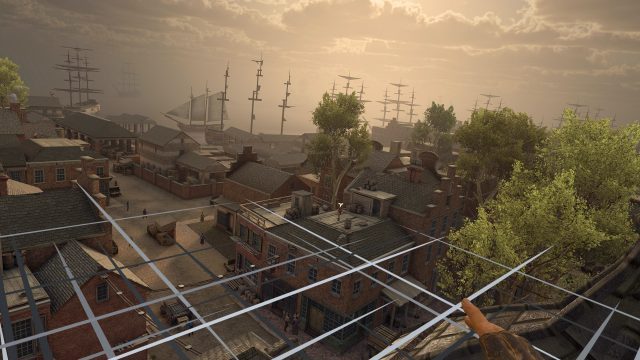
There’s also some parkour-specific accessibility options to try to make things a easier or more predictable. I wish these were a little more immersive though (like the option that shows an indicator for an upcoming hand-hold, which is a very glaring UI icon, whereas perhaps a glowing edge would have been a better option).
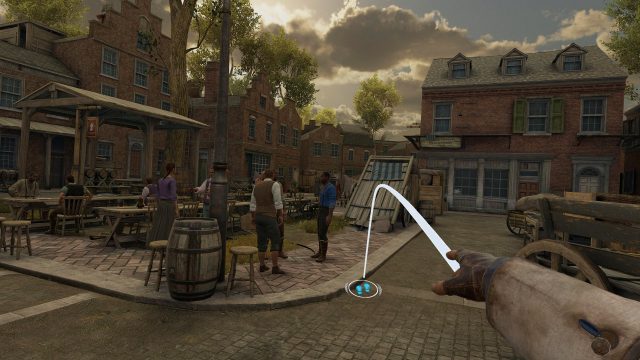
Assassin’s Creed Nexus VR also supports teleport, but it’s rather iffy and very slow. I mean… I’m glad they at least tried to add it for people who couldn’t play a game with this much artificial locomotion, but I found that it slowed the game down to an unacceptable pace. I can’t imagine playing the whole game with teleport; if you do, it seems like it would take one and a half to two times as long to complete than without it.
‘Assassin’s Creed Nexus VR’ Review – AAA Without the Polish Read More »

